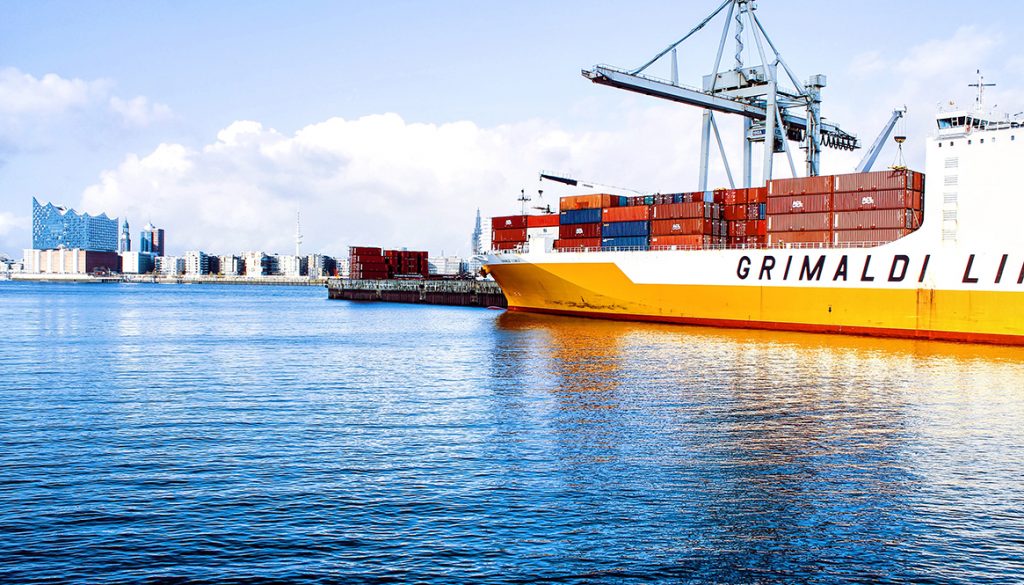Let’s Not Forget
JOC April 2016
Let’s Not Forget
by Gary Ferrulli
Because I’ve been in this business for 44+ years, I tend forget that many, if not most, who read the JOC were barely born then. So let me take the time here to recall how on April 26, 1956 the vessel Idea-X, a converted tanker, carried 58 truck trailers on her maiden voyage between Florida and Texas.
Thus began containerization as we know it today, 60 years ago; I was only 14 at the time and had no idea of the event. The brainchild of a trucker from North Carolina, Malcolm McClean, has turned into one of the most significant industrial accomplishments in the past 100 years.
In the ensuing 60 years, a lot of water has passed under, over and through the bridge. Containerization, “the box that changed the world”, was the catalyst that truly allowed global trade to grow to where it is today. From 1986 through 2006, global trade quadrupled; from 2000 to 2006 it doubled, and the growth of containerization and global trade was no coincidence.
Originally seen by McLean as a “process improvement” project designed to save vessel times in ports, simplify terminal practices and drastically reduce costs, the industry has literally exploded, with a 58 trailer capacity now being as many as 10,000 containers per vessel. And there is no doubt about the efficiencies and effectiveness of the services provided today; while current rates are under severe pressure due to supply/demand ratios, under normal conditions international shipping rates are well below what they were 20 years ago. Services have expanded to virtually all parts of the world; frequencies went from bi-weekly and weekly services in the 1970’s and1980’s to four and five weekly services in most major trades lanes today. It would never have happened if Malcolm’s idea, and the Ideal-X , hadn’t gotten it all started, 60 years ago this month.
Ironically, many of the issues that containerization was to have improved upon are coming back to haunt us – because of improvements to the vessels without the concomitant improvement to the landside infrastructure. With the speed of growth in global trade noted earlier, the vessels have been improved to accommodate that growth. But for various reasons, only ports and terminals in China, Japan, Jebel Ali and Rotterdam have kept up with global trade growth. Thus we have today many instances of congestion at ports, inland infrastructures yet to be built and many existing infrastructures struggling to keep pace with the growth.
The other long lasting “migraine” in the industry is the lack of return on investment leading to a significant turnover of entities in the business. When I first arrived in the scene in 1972 there were ten (10) US Flag companies in US foreign commerce; 9 were subsidized by the US Government (APL, AML, Lykes Lines, Delta Line, Moore McCormick, PFEL, States Line, US Lines and Sea-Land was the lone US Flag carrier unsubsidized), today there are virtually none with APL having one US Flag string in Asia and Matson having 1 string from China to LA/Long Beach; there were six (6) Japanese flagged carriers, today there are three (3). Virtually all South American countries had their own fleets to help protect local markets, today none exist. Similarly in Europe, most nations had their own commercial fleets and household names; P&O, French Line, Italian Line, Barber Blue Sea, Johnson Scan Star, Dart Line, Ned Lloyd – all gone; Hapag Lloyd still hanging in there, Maersk Line had no container ships 44 years ago, MSC and CMA-CGM didn’t exist. The point being that the ocean floors are strewn with the skeletons of major shipping lines of 44 years ago.
Have things gotten any better for the industry? In 2015 the rate of return for container lines was 0.3%, the industry as an industry hasn’t made a profit in five years and apparently 2016 will make it six years in a row. In my personal opinion, during the first 20 to 25 years of my tenure in the industry it was the governments subsidizing the fleets directly or indirectly that lead to most of the poor returns as the managements were not truly focused on profits, rather on how big of a subsidy could they get and there was no particular fear of financial failure, someone was there to back them up. As the governments pulled away financially, the lines fell by the wayside, replaced with some true businesses yet retaining some of the governmental involvement from Singapore, Taiwan, Japan, Korea, China, Israel, the Middle East, and Germany. Singapore, with the sale of NOL/APL will be out of it, but the others remain in a quasi-governmental role.
What is evolving is fewer carriers surviving, and those surviving having a wide and disparate financial success. In one sense survival of the fittest, yet with the lingering effect of the governmental propping up of some carriers. I have seen this occurring for over ten years and have forecasted that by 2022 there will be ten carriers who control 90% of the global container capacity and have 90% of the market share.
Maybe that’s a good result, maybe not. But I wanted to recall and remind of you of the 60th Anniversary of the sailing of the Ideal-X and give kudos to Malcolm McLean for his foresight and vision. And to recall that it’s been a fascinating 44 years for me to have been part of this captivating, yet frustrating, business.



